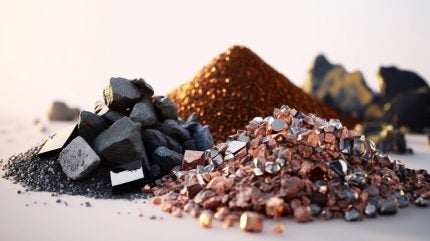
India is preparing to expand its rare earth magnet incentive programme, with plans to nearly triple its size to more than Rs70bn ($786m) as the country seeks to boost domestic capacity in a sector currently dominated by China.
The proposed increase in funding for India’s rare earth magnet incentive programme is currently awaiting cabinet approval, reported Bloomberg.

Discover B2B Marketing That Performs
Combine business intelligence and editorial excellence to reach engaged professionals across 36 leading media platforms.
This represents a substantial escalation from an earlier $290m plan that focused on critical materials for electric vehicles, renewable energy and defence.
According to people familiar with the matter, the final allocation for the incentive programme could still be revised as the information is not yet public.
The move comes as India joins several other nations in accelerating efforts to establish a resilient supply chain for rare earth magnets after China tightened export controls in April amid ongoing trade tensions with the US.
China currently processes around 90% of the world’s rare earth output and its export restrictions have disrupted supplies for automakers globally.

US Tariffs are shifting - will you react or anticipate?
Don’t let policy changes catch you off guard. Stay proactive with real-time data and expert analysis.
By GlobalDataEarlier this year, Indian Prime Minister Narendra Modi highlighted the need to avoid weaponising critical minerals and called for stable, diversified global supply chains, said the news agency.
India’s plan to expand its rare earth sector aligns with global initiatives to reduce dependency on China.
However, the country faces challenges such as limited funding and technical expertise, and lengthy project timelines.
Domestic production of rare earths in India remains non-viable without government subsidies, prompting state-owned enterprises to lead initial efforts in securing overseas mining partnerships.
Technological expertise in rare earth magnet manufacturing remains concentrated in China. Mining rare earths economically presents further challenges including environmental risks stemming from their association with radioactive elements.
The government’s expanded initiative will support around five companies through a combination of production-linked incentives and capital subsidies.
Despite recent moves by China to issue its first licences for imports of rare earth magnets intended for use in India, none have so far been granted to companies of Indian-origin.
A spokesperson for India’s Ministry of Heavy Industries did not immediately respond to requests for comment.
In addition to supporting the manufacturing of rare earth magnets, the government is funding studies on synchronous reluctance motors, a technology that has the potential to reduce reliance on rare earth materials.
Meanwhile, several overseas suppliers have shown interest in supplying rare earth materials to India, which is expected to require around 2,000 tonnes (t) of rare earth oxides annually, demand that can easily be met by global producers.
India is hoping that its expanded incentive programme will attract global magnet manufacturers to establish local subsidiaries or joint ventures, thereby reducing the country’s reliance on Chinese imports.
However, the plan may encounter challenges if China extends its recent easing of export curbs for the US and EU to India.
Such a development could make Chinese magnets more affordable and widely accessible, potentially discouraging long-term investment in India’s emerging rare earth magnet industry.



